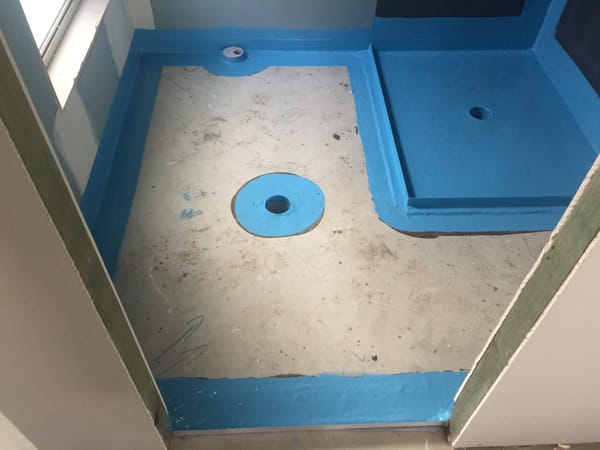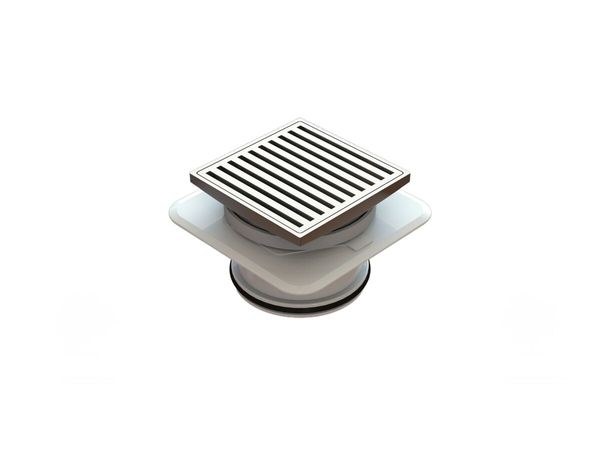Introduction
Choosing the right computer for a construction business in 2024 is no small feat. With various roles, from civil engineers to construction managers, the needs vary significantly. Each role requires specific functionalities, whether for designing complex structures, managing on-site tasks, or coordinating with remote teams. Understanding the key considerations and types of computers available can make a significant difference in productivity and efficiency.
This article we will guide you through the essential aspects of selecting the best computer for your construction business. We’ll explore different computer types, including desktop PCs, laptops, and mobile workstations, and discuss what makes them suitable for various construction-related tasks. We’ll also delve into critical factors like performance, durability, user experience, and cost.
To ensure you make an informed decision, we've established a review criteria and scoring system.
An Unconventional Option: The Abacus
For those construction businesses that are more focused on catching waves at the beach and sipping on a cold one than actually building anything, we present the ultimate low-tech solution: the abacus. Perfect for tallying up the number of cocktails consumed or counting the seashells collected, the abacus boasts unmatched durability and zero battery life concerns. Imagine the conversations you’ll have when you pull out your abacus to "crunch some numbers" – it’s sure to be a hit at the next beachfront barbecue. Plus, there's no need to worry about software updates or compatibility issues, and it’s completely sand-proof!
And if you ever need to "save to the cloud," just toss your abacus in the air and let the seabreeze take care of the rest. No more worrying about data breaches or hacking – your data will be as secure as the abacus is in mid-flight.
So, if your construction team’s primary concern is maximising their beach time while minimising any actual construction, the abacus might just be the "computer" of your dreams. Cheers to simplicity, suntans, and a stress-free "cloud" storage solution!
and now for the more serious review...
Computer Types for Construction
Desktop PCs vs. Laptops
In the construction industry, the choice between desktop PCs and laptops hinges on specific needs and work environments. Desktop PCs, such as the Dell XPS Desktop, offer robust performance and expandability, making them ideal for office-based tasks, complex graphic design, and computer-aided designs (CAD). These systems typically come with high-end processors like Intel Core or AMD Ryzen, ample RAM, and large SSDs, providing the power necessary for demanding applications.
On the other hand, laptops are the go-to choice for their portability and versatility. Devices like the Lenovo ThinkPad X Series or the Apple MacBook Pro offer excellent performance in a compact form factor, making them suitable for both office and fieldwork. Laptops are especially beneficial for construction managers and project managers who need to move between sites, attend meetings, and manage tasks on the go.
Mobile Workstations
For professionals engaged in heavy computational tasks, such as civil engineers and architects, mobile workstations are an excellent choice. These powerful machines, like the Dell Latitude Series and HP ZBook, are equipped with advanced graphics cards, ample RAM (often up to 32GB or more), and high-resolution displays. They are designed to handle intense graphic design, 3D modelling, and CAD work. Despite their power, mobile workstations are still portable enough for on-site use, with durable builds that can withstand the rigours of construction sites.
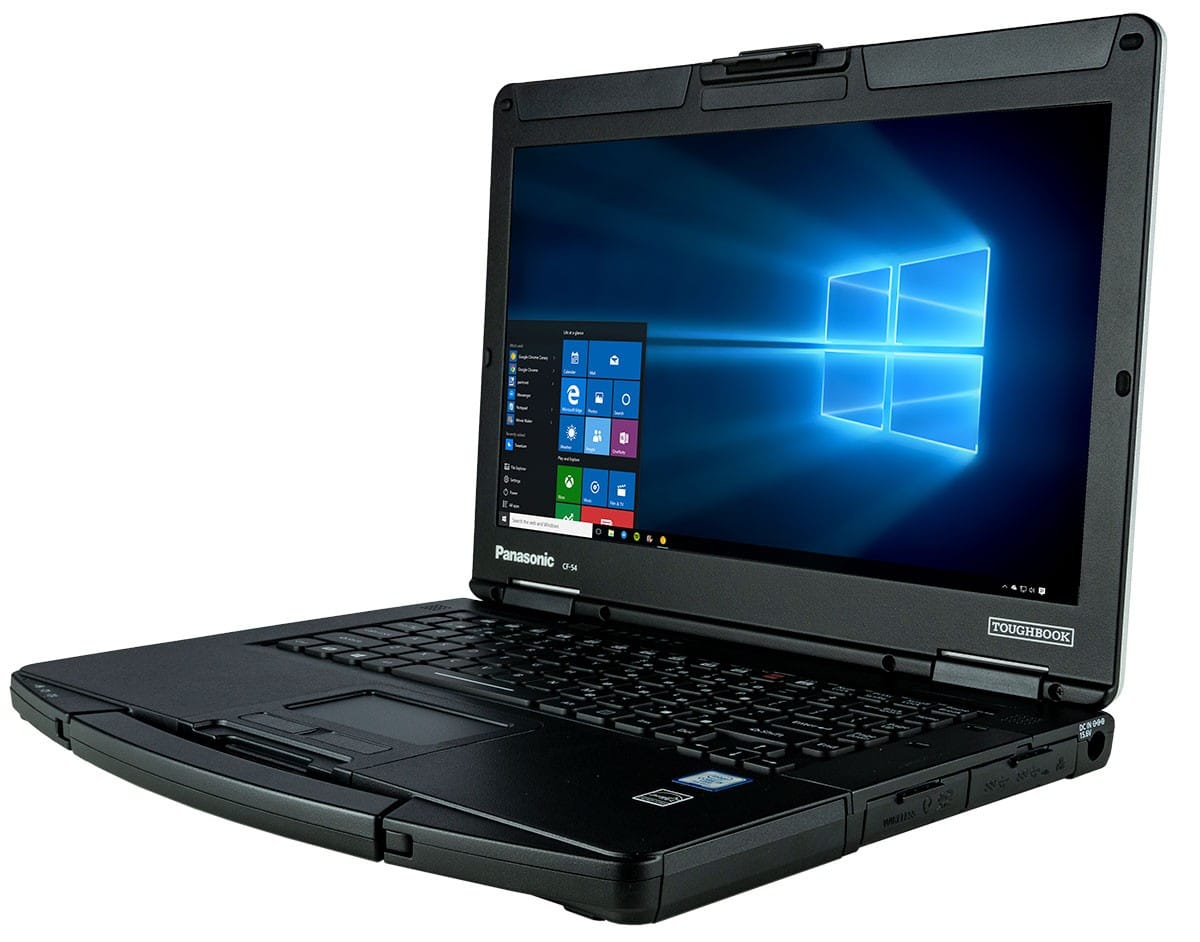
Rugged Laptops
Construction sites can be harsh environments, making durability a top priority. Rugged laptops, such as those from the Panasonic Toughbook series, are built to withstand extreme conditions, including dust, moisture, and drops. These devices often feature ingress protection (IP) ratings, ensuring they can handle direct sunlight and challenging weather conditions. While rugged laptops may have lower specs compared to high-end laptops, their durability makes them invaluable for fieldwork. They are perfect for site supervisors and team members who need reliable equipment in unpredictable environments.
Tablets and 2-in-1 Devices
The versatility of tablets and 2-in-1 devices, like the Microsoft Surface Pro, makes them a popular choice for construction managers and project managers. These devices offer the convenience of a tablet with the functionality of a laptop, allowing for easy note-taking, sketching, and reviewing plans on the go. With features like touch screens, detachable keyboards, and stylus support, these devices are great for quick on-site annotations and presentations. They are particularly useful for tasks that don't require the full power of a workstation but still benefit from the portability and flexibility of a tablet.
Key Considerations for Choosing the Best Computer
Performance and Specifications
When selecting a computer for a construction business, performance is paramount. The processor is the brain of the computer, and options like the 10th generation Intel Core and AMD Ryzen offer excellent performance for multitasking and running complex software. A minimum of 16GB of RAM is recommended for smooth operation, with 32GB or more being ideal for more demanding tasks. Storage is another critical factor, with SSDs offering faster data access and durability compared to traditional hard drives. A larger SSD, such as 512GB or 1TB, provides ample space for large project files and software.
For tasks like video editing and CAD, a dedicated graphics card is essential. Options like the NVIDIA Quadro or AMD Radeon Pro series provide the necessary power for rendering high-quality visuals and complex simulations.
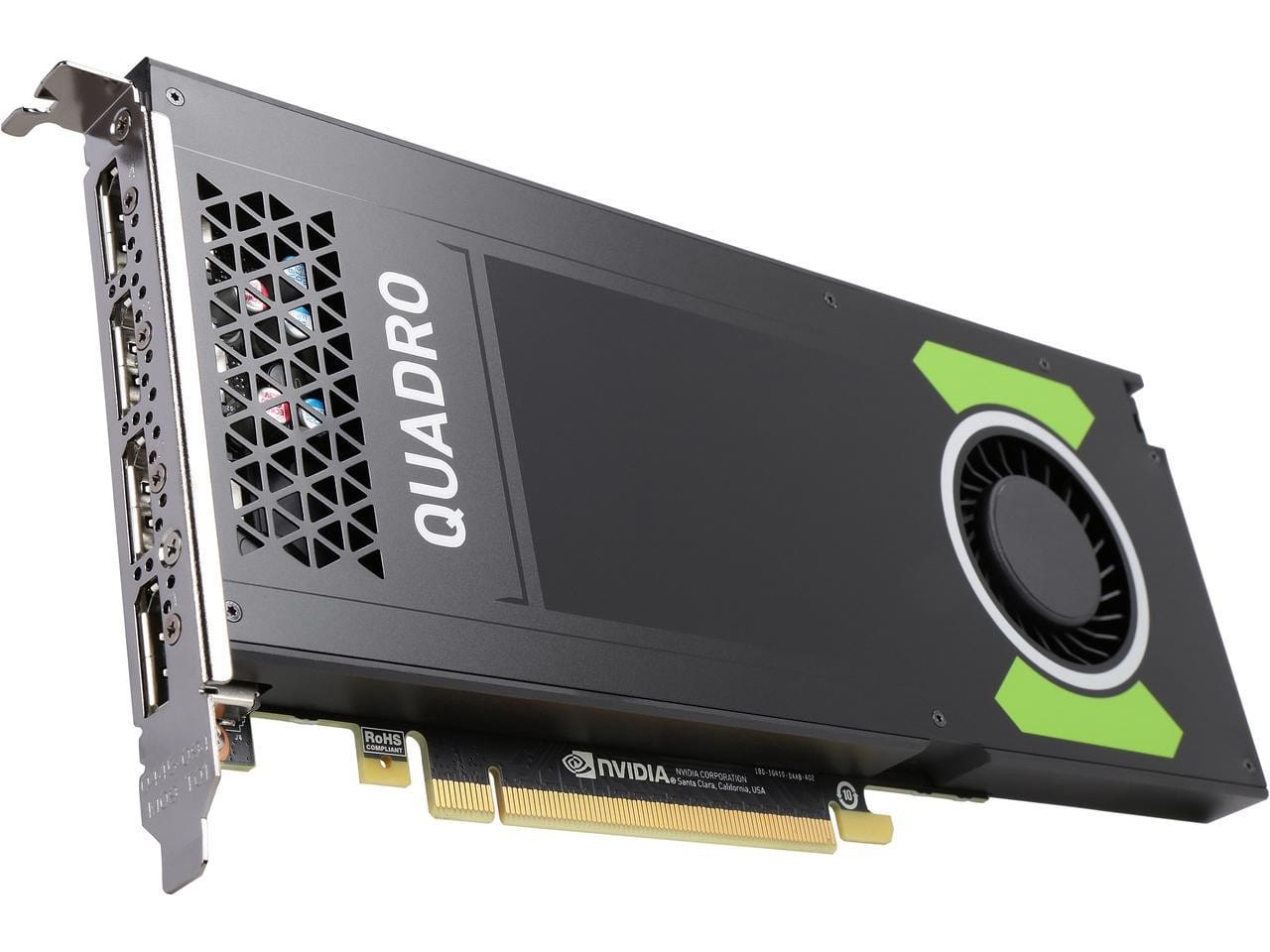
Durability and Portability
Durability is crucial, especially for devices used on construction sites. Look for laptops and tablets with high ingress protection (IP) ratings, which indicate resistance to dust and water. Additionally, devices with rugged designs, reinforced frames, and spill-resistant keyboards can withstand the harsh conditions often found on-site.
Portability is another key consideration. Lightweight laptops and tablets are easier to transport, making them ideal for professionals constantly on the move. However, a balance must be struck between weight and durability, as lighter devices may compromise on ruggedness. For those requiring frequent travel, devices with long battery life and quick charging capabilities are invaluable, ensuring uninterrupted work throughout the day.
User Experience
The user experience encompasses several factors, including the quality of the display, keyboard, and overall ease of use. High-resolution screens, such as 4K displays, provide clear and detailed visuals, essential for reviewing plans and designs. The screen size should also be considered, with larger screens being more comfortable for extended use but less portable.
A good keyboard, preferably backlit, is crucial for comfortable typing, especially in low-light conditions. Security features like fingerprint sensors add an extra layer of protection, ensuring that sensitive information remains secure. Easy access to ports, including USB-C and HDMI, enhances connectivity and usability, allowing for quick connections to peripherals and external displays.
Operating Systems and Software
The choice of operating system can significantly impact workflow. Windows laptops are versatile and widely compatible with various software, making them a popular choice for construction businesses. They support a wide range of applications, from project management tools to CAD software.
Chrome OS offers a lightweight and cost-effective solution for basic tasks and web-based applications, though it may not be suitable for more demanding software. MacOS, found on devices like the Apple MacBook Pro and MacBook Air, is favoured for its smooth user experience and robust performance in creative work, such as graphic design and video editing.
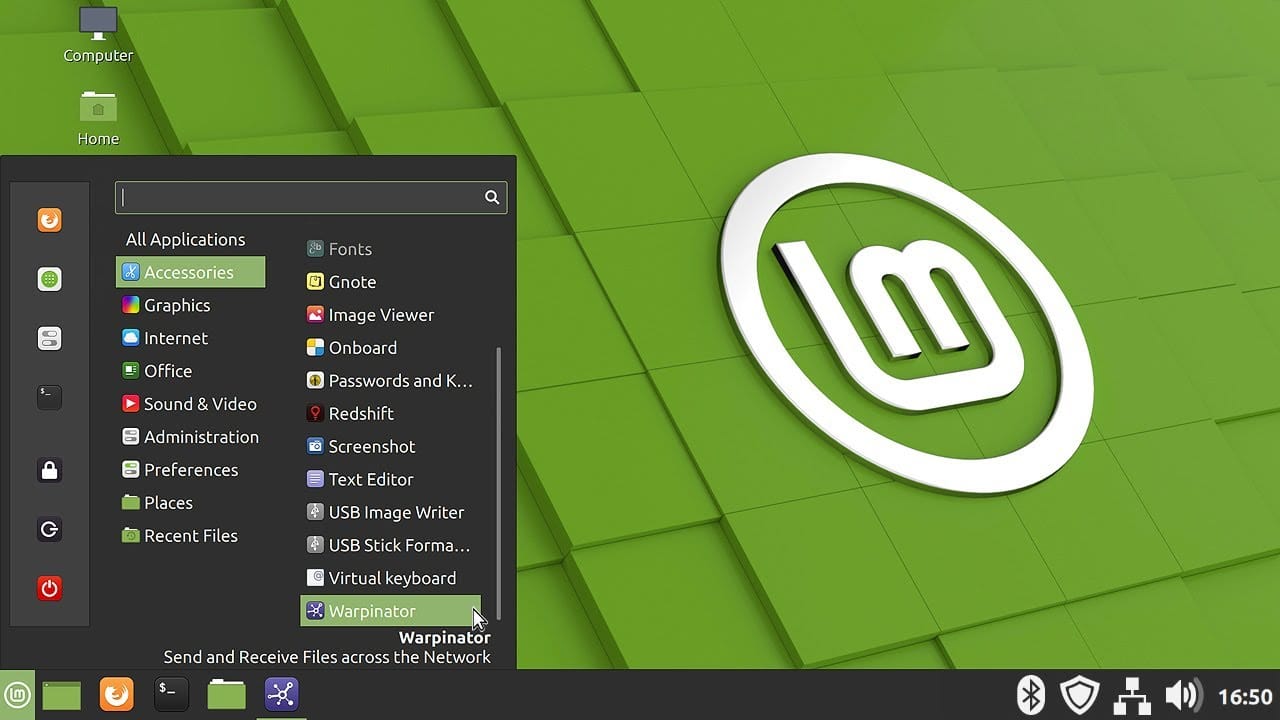
Exploring Linux as an Operating System
For those in the construction business seeking a versatile and cost-effective operating system, Linux offers a compelling alternative to traditional options like Windows and macOS. Linux distributions such as Arch, Linux Mint, and Pop!_OS provide robust, open-source solutions that are highly customisable and efficient. These distributions can be particularly appealing for tech-savvy users who prefer a streamlined, minimalist setup or require specific software environments for tasks like graphic design, video editing, or computer-aided designs (CAD).
One common concern is the compatibility of Linux with Windows-specific software. However, this can be addressed through several methods. Dual-booting, for instance, allows users to install both Linux and Windows on the same laptop computer, providing the flexibility to switch between operating systems as needed. This setup is ideal for project managers and civil engineers who may need to use software exclusive to Windows while benefiting from the stability and customisation of Linux for other tasks.

Alternatively, running Windows software on Linux can be accomplished using a virtual machine (VM) or applications like Wine. A VM allows users to run a full Windows environment within Linux, offering seamless access to Windows applications. Wine, on the other hand, enables direct execution of Windows programs on Linux, making it a lightweight solution for running essential business software without needing a full Windows OS.
There are misconceptions that Linux is difficult to use or lacks support for professional software. In reality, distributions like Linux Mint and Pop!_OS offer user-friendly interfaces and extensive documentation, making them accessible even to those with limited Linux experience. Furthermore, the Linux community provides a wealth of resources and support, ensuring that users can troubleshoot issues and find suitable alternatives for Windows-only applications. With its high level of security, low resource requirements, and zero licensing costs, Linux is a practical choice for businesses looking to maximise efficiency and reduce expenses, while maintaining the flexibility to meet specific needs.
Cost and Warranty
Cost is always a factor when choosing business equipment. While high-end devices come with a higher price, they often provide better performance, durability, and long-term value. It's important to consider the total cost of ownership, including potential repair costs and warranty coverage. A one-year warranty is standard, but extended warranties or service plans can provide additional peace of mind, especially for high-use devices.
Repairability
Repairability is a critical aspect to consider when selecting a computer for a construction business, as it impacts both the total cost of ownership and the longevity of the device. Several key factors contribute to a device's repairability:
Ease of Disassembly: The ease with which a device can be opened for repairs or upgrades is crucial. Devices that utilise standard screws and provide straightforward access to internal components allow for easier repairs. In contrast, those that use proprietary fasteners or have sealed designs may require specialised tools, making them more challenging and costly to service.
Availability of Parts: The availability and cost of replacement parts, such as batteries, screens, and keyboards, play a significant role in repairability. Devices for which parts are readily available and reasonably priced are preferable, as they enable quick and cost-effective repairs. Some manufacturers ensure parts are accessible, while others may restrict access to official channels, potentially increasing repair costs.
Repair Guides and Support: Comprehensive repair guides and support resources, whether from the manufacturer or third-party sources, greatly facilitate the repair process. Devices with extensive documentation, including manuals and video tutorials, are easier to repair. Additionally, the availability and cost of official repair services can vary, influencing the overall repairability.
Modularity: The design of a device with modular components can enhance repairability. For instance, laptops with removable batteries or upgradeable storage allow for individual components to be replaced without affecting the entire system. This modularity not only extends the device's lifespan but also reduces long-term costs by enabling easy upgrades or replacements.
Summary of the Review Criteria and Scoring System
Performance:
- CPU and GPU Power: Assessing the processing capabilities, including the type and generation of the CPU (Intel Core, AMD Ryzen) and the presence of dedicated GPUs.
- RAM and Storage: The amount of RAM and storage (SSD capacity), affecting the ability to handle demanding applications like CAD, video editing, and multitasking.
Durability:
- Build Quality: The sturdiness of the device, including materials used.
- Rugged Features: Additional protection such as ingress protection (IP ratings), shock resistance, and spill-proof keyboards.
Portability:
- Weight and Size: The ease of carrying the device, especially for fieldwork.
- Battery Life: Duration the device can operate on a single charge, and the availability of quick charging.
User Experience:
- Display Quality: Screen resolution, brightness, and colour accuracy, particularly for design tasks.
- Keyboard and Input: The comfort and responsiveness of the keyboard, presence of back lighting, and additional input options like touch screens and stylus support.
- Security Features: Presence of fingerprint sensors, encryption options, and other security measures.
Value for Money:
- Cost vs. Features: The balance between the price of the device and the features it offers, considering both initial cost and long-term value, including warranty and support.
Repairability
- Ease of Disassembly: How easily the device can be opened for repairs or upgrades, including the use of standard screws versus proprietary fasteners.
- Availability of Parts: The availability and cost of replacement parts, such as batteries, screens, and internal components.
- Repair Guides and Support: The availability of repair guides, manuals, and support from the manufacturer or third-party services.
- Modularity: The design of the device in terms of modular components that can be easily replaced or upgraded.
Review and Comparison of Top Computers for Construction in 2024
Dell Latitude Series
The Dell Latitude series stands out for its blend of performance and durability. These laptops feature Intel Core processors, ample RAM, and SSD storage, making them suitable for a wide range of construction tasks. The Latitude series is known for its robust build quality, with some models offering additional rugged features for on-site use. The series also includes options for high-resolution displays and backlit keyboards, enhancing user experience in various lighting conditions.
Dell Latitude Series Review Summary
- Dell Latitude Series
- Performance: 8/10
- Durability: 9/10
- Portability: 7/10
- User Experience: 8/10
- Value for Money: 8/10
- Repairability: 8/10
- Total Score: 48/60
Lenovo ThinkPad X Series
The Lenovo ThinkPad X Series is synonymous with reliability and security. These laptops are equipped with powerful processors, sufficient RAM, and SSD storage. The ThinkPad's keyboard is considered one of the best in the industry, offering excellent tactile feedback and a comfortable typing experience. Security features, such as fingerprint readers and encrypted storage options, make them a great choice for handling sensitive project data.
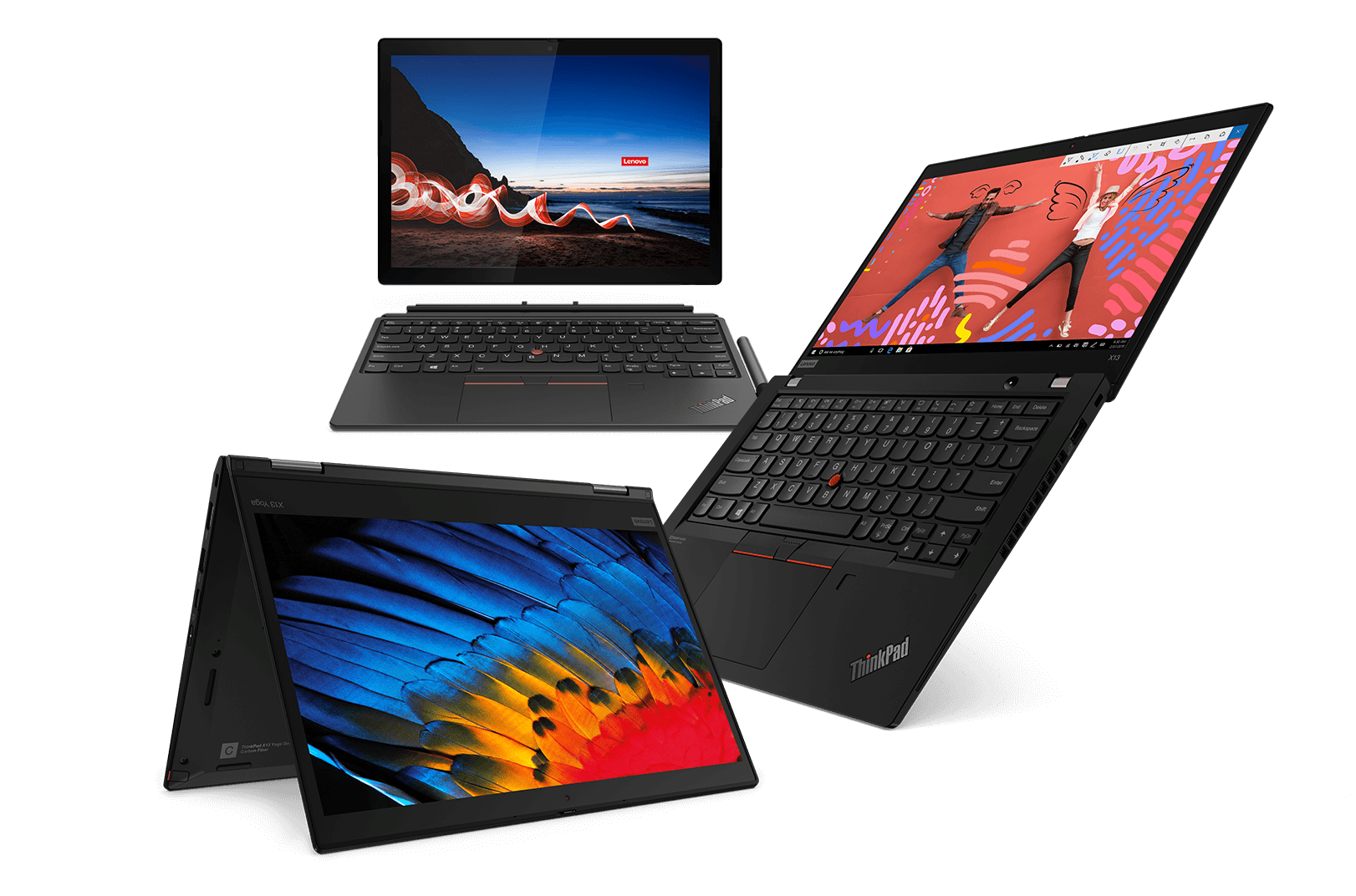
Lenovo ThinkPad X Series Review Summary
- Performance: 9/10
- Durability: 8/10
- Portability: 8/10
- User Experience: 9/10
- Value for Money: 8/10
- Repairability: 9/10
- Total Score: 51/60
Apple MacBook Pro and MacBook Air
Apple's MacBook Pro and MacBook Air are excellent choices for creative work and mobile productivity. The MacBook Pro, with its high-resolution Retina display, powerful processors, and dedicated graphics, is ideal for tasks like video editing and graphic design. The MacBook Air, while less powerful, offers a lightweight and portable option with good battery life. Both models feature macOS, known for its stability and intuitive interface, making them popular in higher education and creative industries.
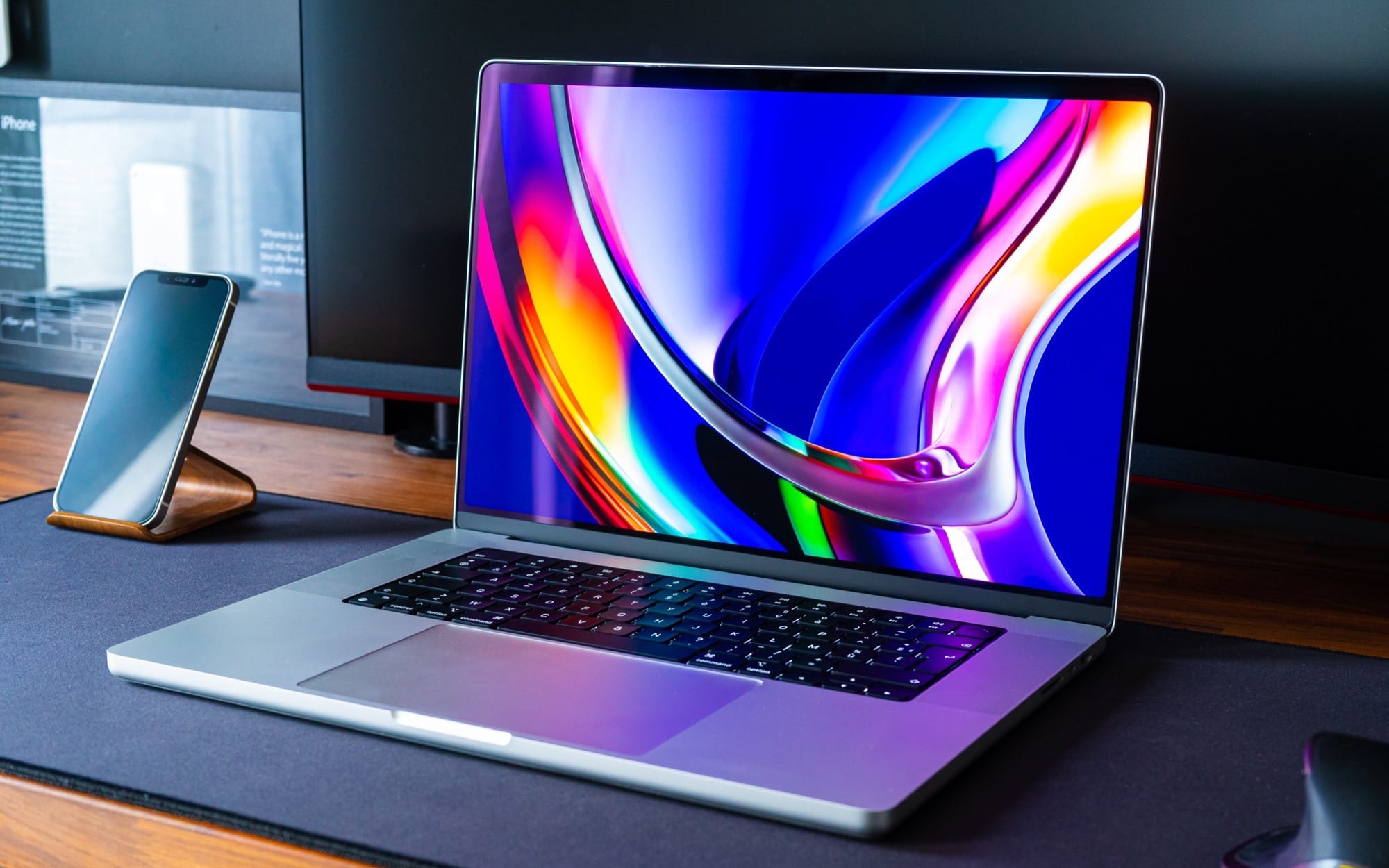
Apple MacBook Pro
- Performance: 9/10
- Durability: 7/10
- Portability: 8/10
- User Experience: 9/10
- Value for Money: 7/10
- Repairability: 5/10 (a kick in the balls is easier to repair that any Apple product)!
- Total Score: 45/60
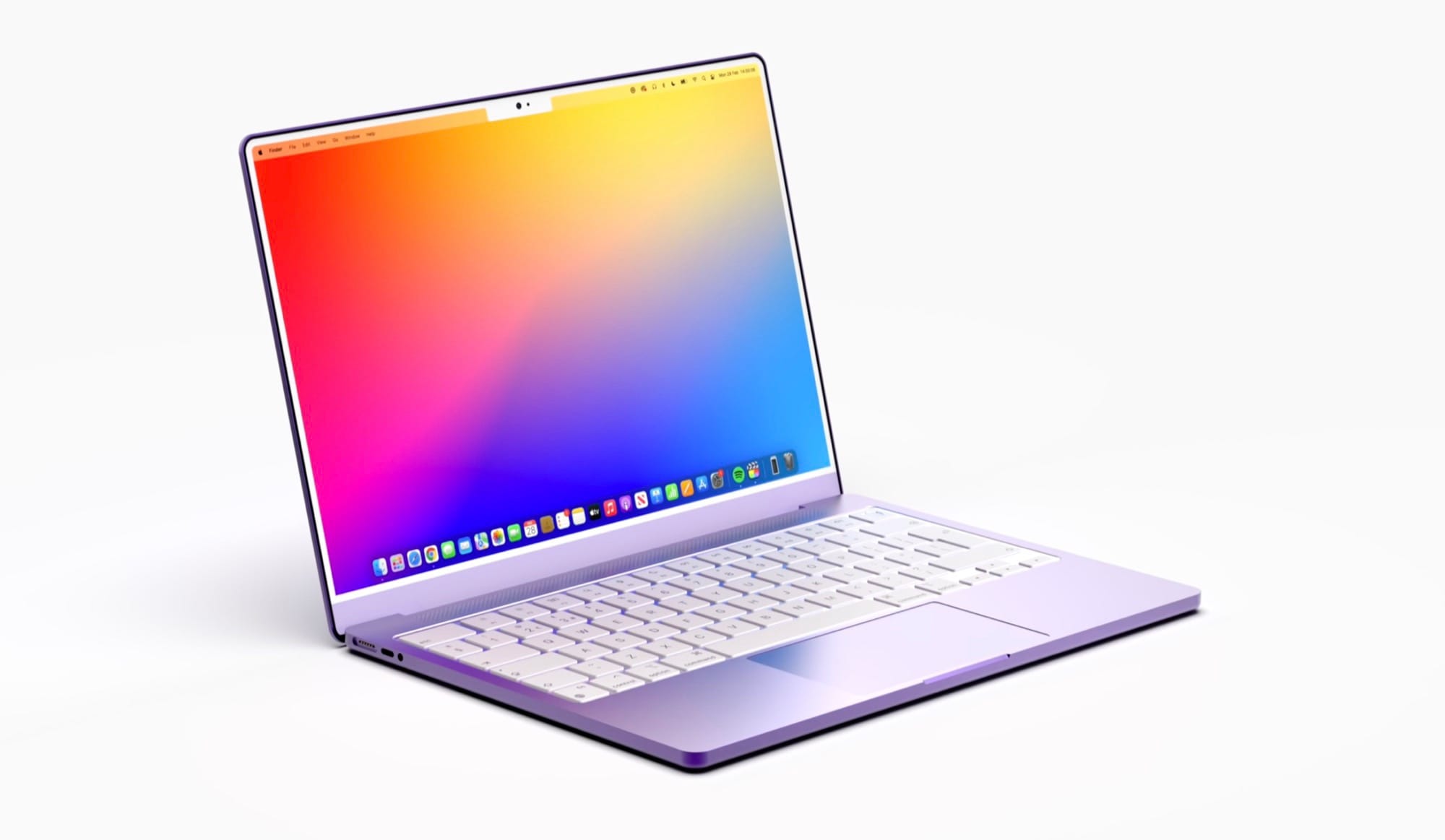
Apple MacBook Air
- Performance: 7/10
- Durability: 7/10
- Portability: 9/10
- User Experience: 8/10
- Value for Money: 7/10
- Repairability: 5/10 (two kicks in the balls still easier to get over than fixing a Mac)
- Total Score: 43/60
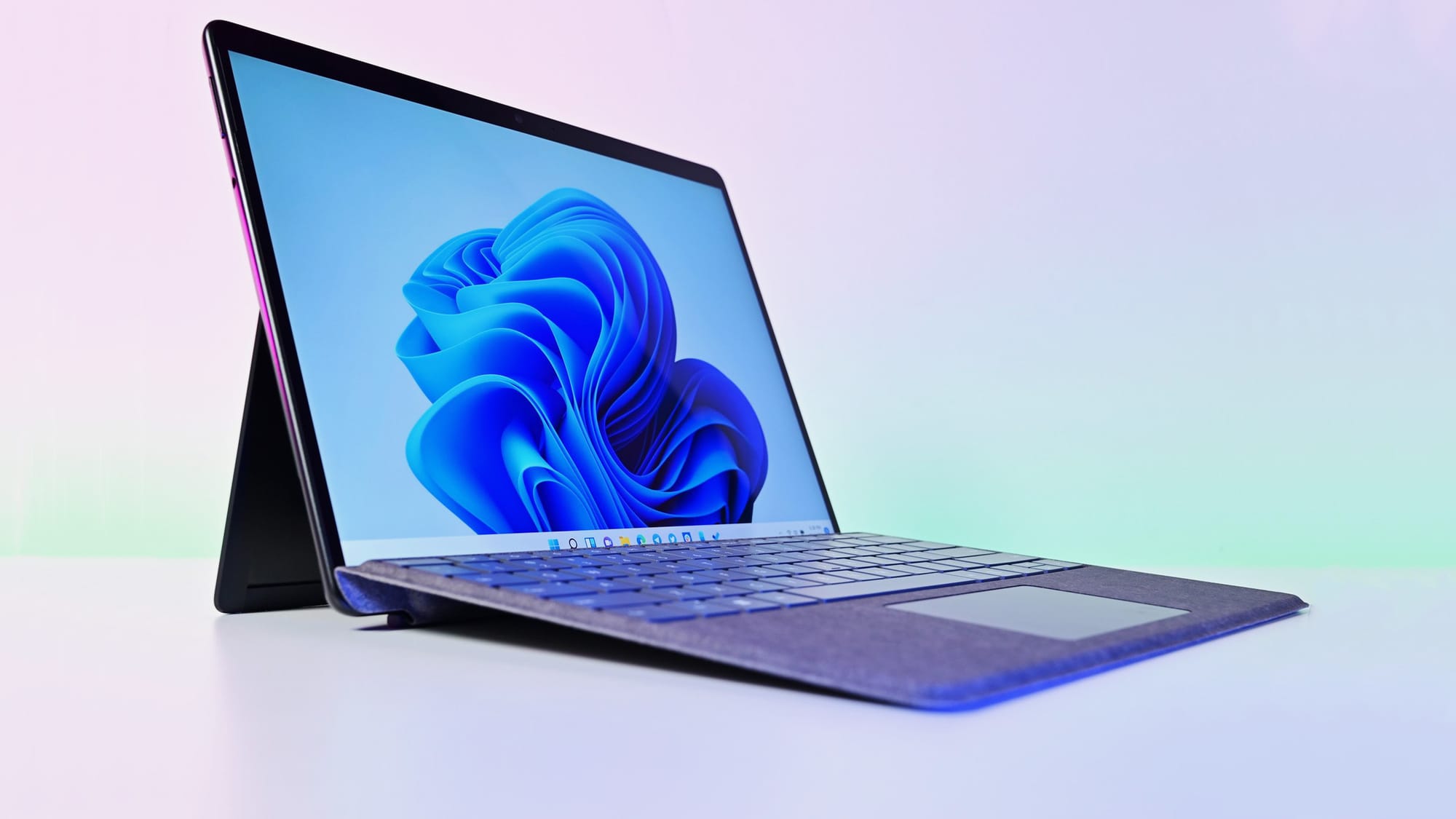
Microsoft Surface Pro
The Microsoft Surface Pro is a versatile 2-in-1 device that combines the functionality of a laptop and a tablet. It's perfect for construction managers and project managers who need to sketch ideas, take notes, and present plans on the go. The Surface Pro features a high-resolution touch screen, stylus support, and a detachable keyboard, making it an adaptable tool for various tasks. Its lightweight design and long battery life make it easy to carry around, while its performance is sufficient for most business applications.
Microsoft Surface Pro
- Performance: 7/10
- Durability: 7/10
- Portability: 9/10
- User Experience: 9/10
- Value for Money: 8/10
- Repairability: 4/10
- Total Score: 44/60
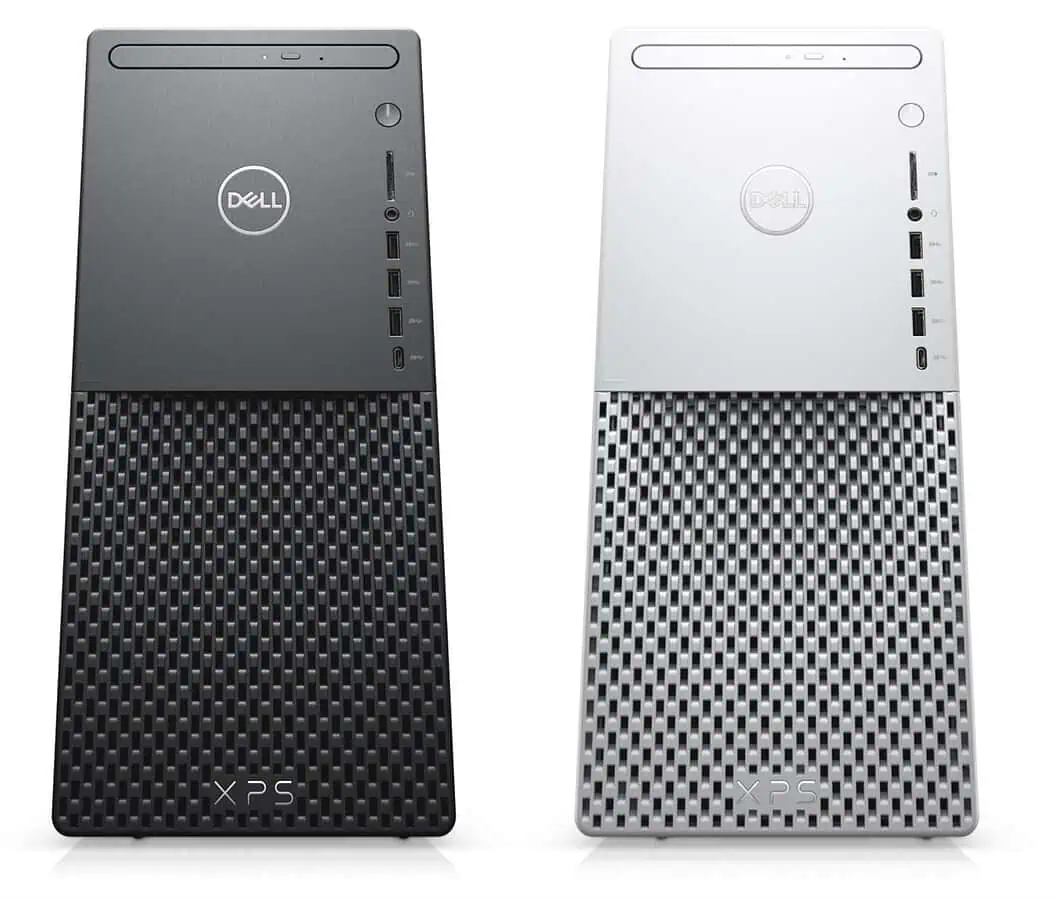
Dell XPS Desktop and Other Business PCs
For office-based roles, the Dell XPS Desktop and similar business PCs offer top-tier performance. These systems are equipped with the latest processors, large amounts of RAM, and extensive storage options, making them ideal for intensive tasks like CAD, video editing, and data analysis. They also provide easy access to internal components, allowing for upgrades and maintenance. While they lack portability, their superior performance makes them a valuable asset for stationary work environments.
Dell XPS Desktop
- Performance: 10/10
- Durability: 8/10
- Portability: 5/10
- User Experience: 9/10
- Value for Money: 8/10
- Repairability: 9/10
- Total Score: 49/60
Our Pick
Lenovo ThinkPad X Series
Our top pick for the best computer for a construction business in 2024 is the Lenovo ThinkPad X Series. Here’s why it stands out:
Performance: The Lenovo ThinkPad X Series offers excellent performance with powerful processors, ample RAM, and SSD storage. It is equipped to handle complex tasks such as CAD, graphic design, and video editing, making it suitable for demanding construction applications. The availability of configurations with high-end CPUs like Intel Core and AMD Ryzen ensures that it can meet the needs of various professionals, from civil engineers to project managers.
Durability: Known for its robust build quality, the ThinkPad X Series is designed to withstand harsh environments. With features such as spill-resistant keyboards and reinforced frames, it is well-suited for the challenges of construction sites. Its durability ensures reliability, reducing the likelihood of downtime due to hardware failures.
Portability: Balancing power and portability, the ThinkPad X Series is lightweight and easy to carry, making it ideal for professionals who need to move between office and fieldwork. It offers long battery life and quick charging capabilities, ensuring that it can keep up with long days on-site without frequent recharging.
User Experience: The ThinkPad X Series excels in user experience with its high-resolution displays, comfortable and backlit keyboards, and a range of security features including fingerprint sensors. The device’s trackpoint and responsive touchpad provide excellent navigation options, and its screen quality ensures clear and detailed visuals for reviewing plans and designs.
Repairability: The ThinkPad X Series scores high on repairability, with easy disassembly and accessible internal components. Lenovo provides comprehensive repair guides and support, and replacement parts are readily available and affordable. Its modular design allows for simple upgrades and repairs, contributing to a longer lifespan and lower total cost of ownership.
Conclusion
Choosing the right computer for your construction business in 2024 involves balancing performance, durability, portability, and cost. Whether you're a civil engineer needing a powerful mobile workstation or a project manager requiring a versatile tablet, there's a computer to suit your needs.
The Dell Latitude series offers a robust option for those needing a durable and reliable laptop, while the Lenovo ThinkPad X Series provides excellent security features. For creative tasks, the Apple MacBook Pro and MacBook Air deliver outstanding performance and display quality. Meanwhile, the Microsoft Surface Pro offers unmatched versatility for mobile work. Finally, the Dell XPS Desktop and other business PCs provide the power necessary for demanding office tasks.
By considering factors such as performance, durability, user experience, and cost, you can make an informed decision that enhances your productivity and supports your business's growth. Remember, the best computer is not just about specifications but also about how well it meets your specific needs and work environment.
Opt for a Mac if you're okay with not being able to fix your device when it inevitably gets dropped onsite while you're distracted. Or, if you enjoy a challenge and a bit of frustration.
Frequently Asked Questions (FAQs)
What are the most important specifications to consider for a construction business computer?
- Key specifications include processor type (Intel Core, AMD Ryzen), RAM (at least 16GB), storage (SSD), and graphics capabilities, especially for CAD and video editing tasks.
Why is durability important for computers used in construction?
- Construction sites can be harsh environments with dust, moisture, and potential drops. Durable computers with rugged designs and ingress protection can withstand these conditions, ensuring reliability and longevity.
How does screen quality impact work in construction?
- High-resolution screens provide clearer visuals, which are crucial for reviewing detailed plans and designs. A good screen also reduces eye strain during extended use.
Are tablets and 2-in-1 devices practical for construction managers?
- Yes, tablets and 2-in-1 devices offer versatility and portability, making them ideal for on-site use. They allow for quick note-taking, sketching, and presentations.
What operating systems are best for construction work?
- Windows is versatile and compatible with most construction software. MacOS is excellent for creative tasks, while Chrome OS is suitable for basic tasks and web-based applications.
How important is battery life for on-site work?
- Long battery life is crucial for professionals who spend a lot of time away from power sources. It ensures that work can continue uninterrupted throughout the day.
Can a high price computer be justified for a construction business?
- Yes, higher-priced computers often offer better performance, durability, and long-term value, making them a worthwhile investment for businesses requiring reliable and powerful machines.
What are the benefits of having a fingerprint sensor on a laptop?
- A fingerprint sensor enhances security by providing quick and secure access to the device, protecting sensitive data from unauthorised access.
Should I consider a warranty when purchasing a computer for my business?
- Yes, a warranty provides protection against potential hardware failures and can save costs on repairs. Extended warranties offer additional peace of mind.
What makes rugged laptops a better choice for construction sites?
- Rugged laptops are built to endure tough conditions, such as drops, extreme temperatures, and exposure to dust and water, making them reliable for on-site work.
Further Reading





